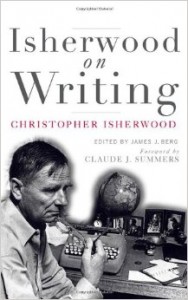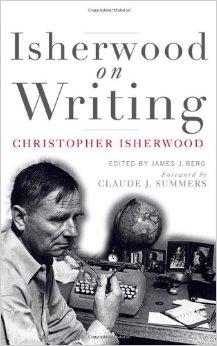 Isherwood on Writing: The Lectures in California
Isherwood on Writing: The Lectures in California
Edited by James J. Berg
University of Minnesota Press. 208 pages, $25.95
ON MARCH 20, 1959, Christopher Isherwood signed on to teach at Los Angeles State College. This turned out to be the first of three campuses where he would lecture over the next seven years. He also taught at UC–Santa Barbara in 1960 and at UCLA, 1965–66, and he delivered two lectures at UC–Berkeley. Isherwood scholars and fans have long been aware that transcripts exist of the lectures he delivered at the two UC campuses; now these transcripts, along with lectures notes, have been published.
Isherwood on Writing is divided into three sections. The first consists of a series called “A Writer and His World,” the name he gave to his Santa Barbara lectures. The second, “The Autobiography of My Books,” contains his UCLA and Berkeley lectures. The third consists of Isherwood’s lecture notes. Those who have read some of the novelist’s many interviews will find many familiar themes here. As in his interviews, Isherwood pays homage to his favorite writers—Melville, Hemingway, Dostoevsky, Tolstoy, Lawrence, Conrad, Katherine Mansfield, R. L. Stevenson, and especially E. M. Forster—and explains why he’s partial to them. The one visual artist who finds a prominent place is Francis Bacon, who tried to “get down to the nerve” in his paintings. Isherwood’s ideal writer is one who possesses this quality, who relies on his own experiences in his work, and one who strives to communicate a sense of “joy.” The latter notion apparently derives from his reading of Vedantic literature. In one lecture he quotes from the Taittarya Upanishad—although he doesn’t acknowledge the source—to explain his idea of joy as “a kind of higher fun, a kind of mad vitality which exists in the universe.”







